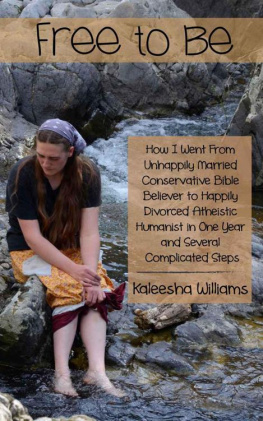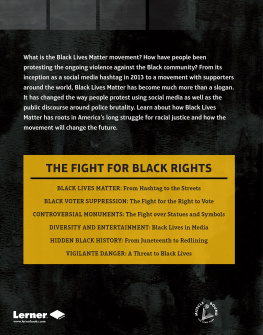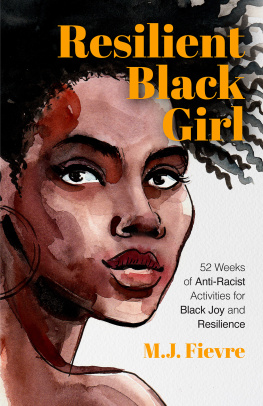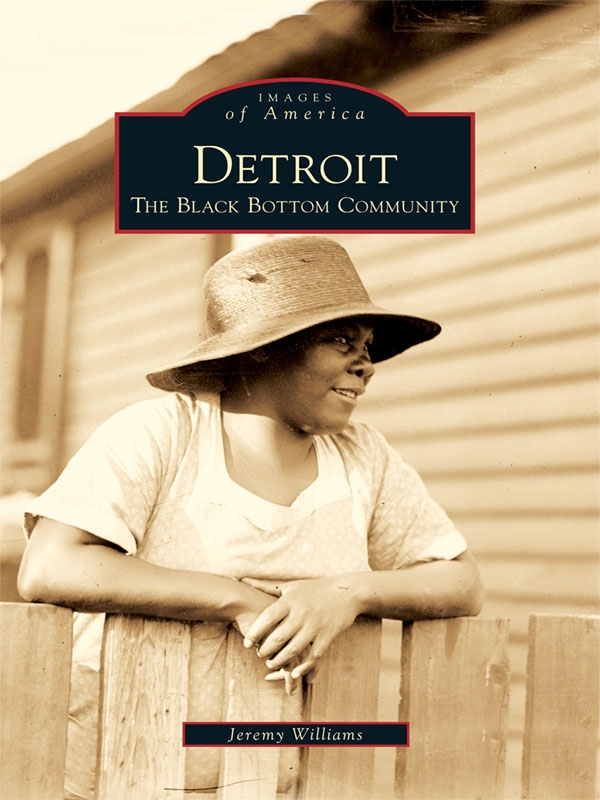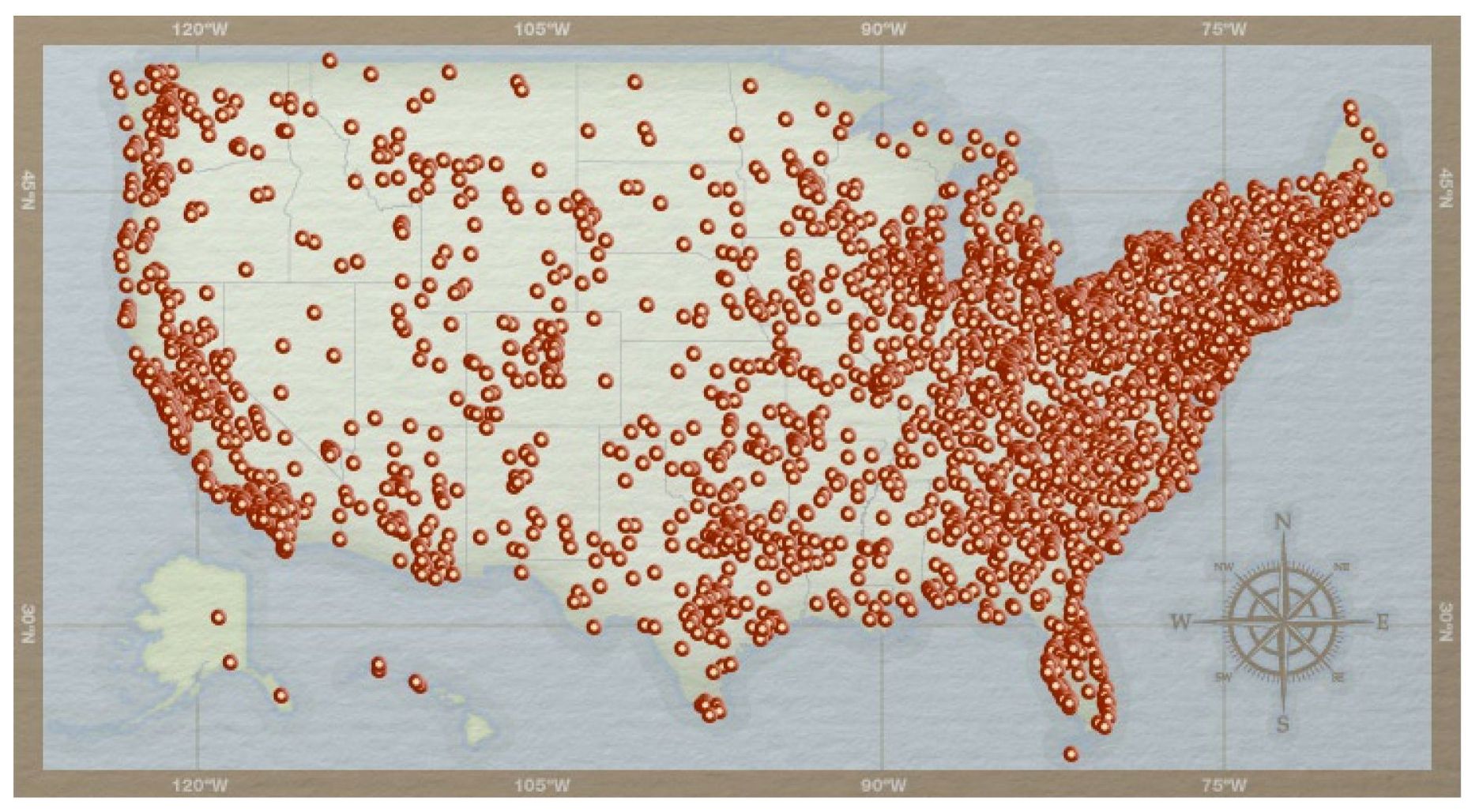Several people provided indispensable aid and support in the writing of this book. Elizabeth Clemens, audio-archivist for Walter P. Reuther Library at Wayne State University; Mark Patrick, coordinator for special collections at Detroit Public Library; and Karen L. Jania, division head for Bentley Historical Collections at University of Michigan, gave me their prompt service and undivided attention. Thanks to my editor, Anna Wilson, for her unending guidance and direction. Special thanks to my eternal friend Maia Bass for her gracious hospitality during those chilly winter months spent in Detroit and Dearborn conducting research for this book. Super thanks to former Black Bottom resident Ms. Billie Jimerson, for inviting me into her home for coffee, cigarettes, and reminiscences on good times in Black Bottom. Extra thanks to Mary Patterson at Cup O Karma Caf in Mesa, Arizona. Thanks to Bernadette Nellum. See you at Venice Beach!
I thank my family and friends, Taji, Mal, Elon, John, Lisa, Helen, Sharonda, LJ, Sparkle, Larry Lucido, Seven, Dee, Kevin, Dwayne, and Chyna for lending time and attention to my random discussions and rants on Black Bottom history.
Lastly, a great amount of recognition is due to the vicious circle: Glenda, Erick, Michelle, Dean, Rowena, Janine, Misty, Yvonne, and Dee Wilkins. Your insightful blogs and fruitful discussions helped me to sharpen my wits, expand my ideas, and deepen my historical perspectives.
The images in this volume appear courtesy of the Walter P. Reuther Library at Wayne State University (WRL), the Burton Historical Collections at the Detroit Public Library (BHC), the Detroit Urban League records, and Bentley Historical Library at the University of Michigan (BHL).
BIBLIOGRAPHY
Baulch, Vivian M., and Patricia Zacharias. The 1943 Detroit Race Riots. Detroit News , February 11, 1999. http://apps.detnews.com/apps/history/index.php?id=185 .
. Paradise Valley and Black Bottom. Detroit News , August 7, 1996. http://apps.detnews.com/apps/history/index.php?id=174 .
Bell, Ernest G. History of the Black Church in Detroit as a Study in American Public Address. Ph.D. diss., Wayne State University, 1987.
Boyle, Kevin. Arc of Justice: A Saga of Race, Civil Rights, and Murder in the Jazz Age . New York: Henry Holt and Company, 2004.
Capeci, Dominic J., Jr. Race Relations in Wartime Detroit: The Sojourner Truth Housing Controversy of 1942 . Philadelphia: Temple University Press, 1984.
Capeci, Dominic J., Jr., and Martha Wilkerson. Layered Violence: The Detroit Rioters of 1943 . Jackson, MS: University Press of Mississippi, 1991.
Castellanos, Jorge. Black Slavery in Detroit. Journal of Regional History 6, no. 1 (1982): 54.
Cohassey, John. Down on Hastings Street: A Study of Social and Cultural Changes in a Detroit Community, 19411955. Masters thesis, Wayne State University, 1993.
Current, Gloster. Paradise Valley: A Famous and Colorful Part of Detroit as Seen Through the Eyes of an Insider. Detroit Magazine (June 1946): 3234.
Detroit Journal; When Life in the Projects Was Good. New York Times , July 31, 1991. http://query.nytimes.com/gst/fullpage.html?res=9D0CE2DC1030F932A05754C0A967958260 .
Emmett, J. Scott. Letters of Negro Migrants of 19161918. Journal of Negro History 4, no. 3 (1919): 290340.
Erickson, Cheryl Brent. Dreamers: The friendship of Dr. Martin Luther King Jr. and Walter Reuther. http://www.uaw.org/events/mlk/02/mlk02.html#_ftn1 .
Fry, Charles Luther. The Negro in the United StatesA Statistical Statement, in The American Negro, sepcial issue, Annals of the American Academy of Political and Social Science 140 (1928): 2635.
Goodwin, Doris Kearns. No Ordinary Time . New York: Simon and Schuster, 1994.
Harp, Andrea S., and Alicia Di Rado. Coleman A. Young: Social and Political Powerbroker. Department of Interdisciplinary Studies, Wayne State University, April 17, 2001. http://www.is.wayne.edu/mnissani/elephant/young.htm .
Haynes, George Edmund. Negro Newcomers in Detroit . New York: Arno Press and New York Times , 1969.
Hicks, Mary. The Coverage of World War I by the Radical Black Press, 19171919. Iowa Historical Review (2007): 5782.
Hunter, Gary Jerome. Dont Buy Where You Cant Work: Black Urban Boycott Movements During the Depression, 19291941. Ph.D. diss., University of Michigan, 1977.
Johnson, Charles S. Incidence Upon the Negro. American Journal of Sociology 40, no. 6 (1935): 737745.
Katzman, David M. Before the Ghetto: Black Detroit in the Nineteenth Century . Chicago: University of Illinois Press, 1973.
Landon, Fred. The Negro Migration to Canada after the Passing of the Fugitive Slave Act. Journal of Negro History 5, no. 1 (1920): 2236.
Latzman, Elaine Moon. Untold Tales, Unsung Heroes: An Oral History of Detroits African American Community, 19181967 . Detroit: Wayne State University Press, 1994.
Mays, Benjamin E. The Negros Church . New York: Institute of Social and Religious Research, 1933.
Michigan: Decline in Detroit. Time , October 27, 1961. http://www.time.com/time/magazine/article/0,9171,873465-1,00.html .
Moore, Peggy A. Paradise Valley Days: A Photo Album Poetry Book of Black Detroit, 1930s to 1950s . Detroit: Detroit Black Writers Guild, Inc., 1998.
Murage, Njere Wa. Organizational History of the Detroit Urban League, 19161960. Ph.D. diss., Michigan State University, 1993.
Palmer, Dewey H. Moving North: Migration of Negroes during World War I. Phylon 28 no. 1 (first quarter, 1967): 5262.
Patterson, Joyce Shaw. Black Automobile Workers in Detroit, 19101930. Journal of Negro History 64, no. 3 (1979): 177190.
Reid, Ira De A. A Critical Summary: The Negro on the Home Front in World War I and II. Journal of Negro Education 12, no. 3 (1943): 511520.
Sugrue, Thomas. The Origins of the Urban Crisis . Princeton, NJ: Princeton University Press, 1996.
Talley, Scott. Black Bottom Was Tops. Michigan Chronicle Online , July 16, 2008. http://www.michronicleonline.com/articlelive/articles/2919/1/Black-Bottom-was-Tops/Page1.html .
Thomas, Richard W. Life for Us Is What We Make It: Building Black Community in Detroit, 19151945 . Bloomington, IN: Indiana University Press, 1992.
Trotter, Joe William, ed. The Great Migration in Historical Perspective: New Dimensions of Race, Class, and Gender . Bloomington, IN: Indiana University Press, 1991.
Trotter, Joe William, and Earl Lewis. African Americans in the Industrial Age: A Documentary History, 19151945 . Boston: Northeastern University, 1996.
Washington, Forrester B. Deluxe Summer Camp for Colored Children. Journal of Negro Life 9 (1921): 303306.
Weaver, Robert C. Detroit and Negro Skill. Phylon 4, no. 2 (second quarter, 1943): 131143.
White, Horace. Who Owns the Negro Churches? Christian Century (February 1938): 176.
Wilson, Sunnie, and John Cohassey. Toast of the Town: The Life and Times of Sunnie Wilson . Detroit: Wayne State University Press, 1998.
Wolcott, Victoria W. Remaking Respectability: African American Women in Interwar Detroit . Chapel Hill, NC: University of North Carolina Press, 2001.
Wood, L. Hollingsworth. The Urban League Movement. Journal of Negro History 9, no. 2 (1924): 117126.
Wye, Christopher G. The New Deal and the Negro Community: Toward a Broader Conceptualization. Journal of American History 59, no. 3 (1972): 621639.





